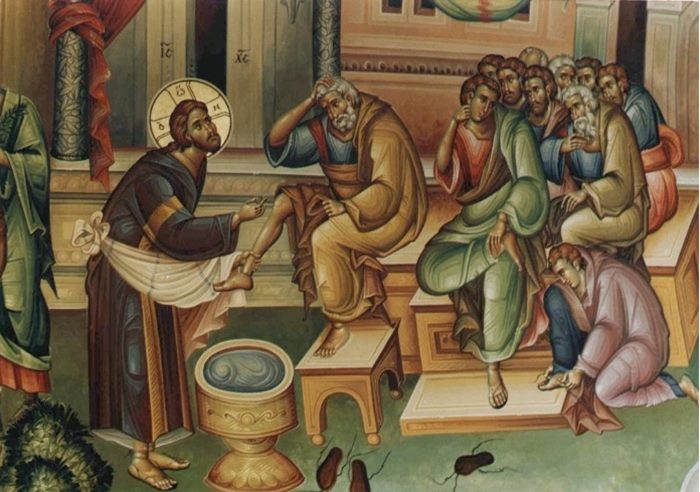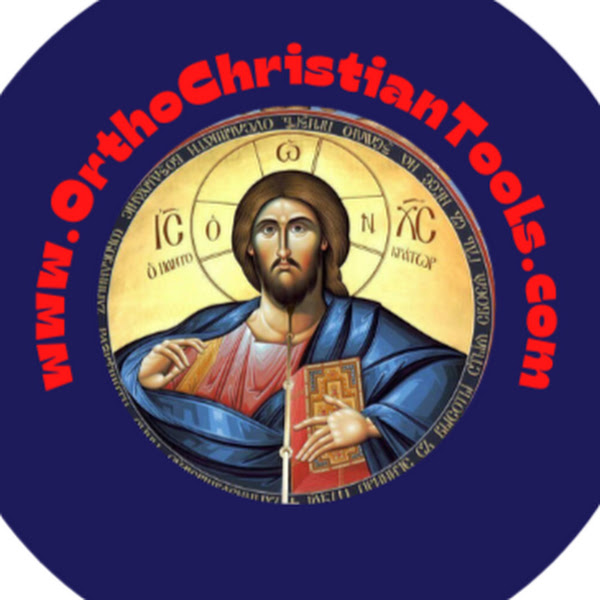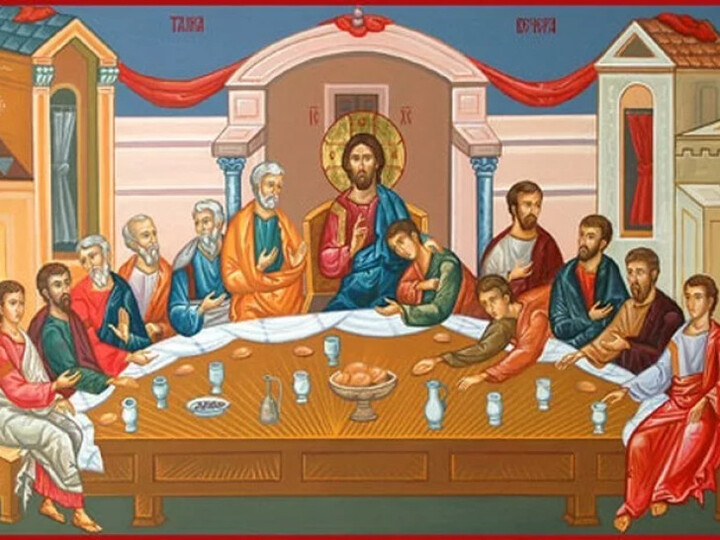Great and Holy Thursday stands as one of the most theologically profound and spiritually rich days of Holy Week in the Orthodox Christian tradition. On this sacred day, the Church commemorates four pivotal events in the life of Christ:
- The Washing of the Disciples’ Feet, the Institution of the
- Holy Eucharist during the Last Supper,
- Christ’s Agony and Prayer in the Garden of Gethsemane, and
- The Betrayal by Judas.
The Institution of the Holy Eucharist
At the Mystical Supper in the Upper Room, Jesus established the Sacrament of the Holy Eucharist, offering His Body and Blood to His disciples. He proclaimed, “Take, eat; this is my Body. Drink of it all of you; for this is my Blood of the New Covenant” (Matthew 26:26-28).
In this divine act, Christ gave a new and eternal meaning to the sacred meal. Bread and wine, common elements of sustenance, became vessels of divine life. Though their physical properties remain, they are mystically transformed into the very Body and Blood of Christ. Through the Eucharist, God shares His divine life with humanity, inviting us to partake in His divine nature (2 Peter 1:4).
Saint Maximos the Confessor eloquently stated that Christ “transmits to us divine life, making Himself eatable.” The Eucharist is not merely symbolic; it is a transformative mystery in which believers are united with the Passion, Resurrection, and divine life of Christ.
The Eucharist is the center of the Church’s spiritual life. It is both the source and summit of Christian existence. It completes and recapitulates all other sacraments, renewing and increasing our life in Christ with every reception.
The Washing of the Feet
In an extraordinary act of humility and love, Jesus washed the feet of His disciples (John 13:2-17). This action summarizes His entire earthly ministry. While the Cross represents His perfect obedience to the Father, the washing of the feet reveals His self-giving love for each person.
This act is intimately connected to the sacrifice of the Cross. It is a moment of kenosis—the self-emptying of Christ—whereby He becomes the servant of all. The Lord of Glory stooped to cleanse the dust from the feet of His followers, pointing to the path of humility, love, and service as the true way of discipleship.
The Agony in the Garden
Before His arrest, Jesus entered the Garden of Gethsemane and prayed in agony (Matthew 26:36-46). Though He was the sinless Son of God, He embraced the full burden of human suffering. In deep sorrow, facing imminent death, He cried out, “Abba, Father, all things are possible to thee; remove this cup from me; yet not what I will, but what thou wilt” (Mark 14:36).
In this moment, Jesus displayed His true humanity. He feared, suffered, and yet submitted completely to the will of the Father. His obedience, born of love, broke the power of sin and death. The Garden of Gethsemane reveals Christ’s ultimate act of surrender, showing us the path of faithful obedience even amidst suffering.
The Betrayal by Judas
Judas Iscariot, once a trusted disciple, betrayed Jesus with a kiss—the symbol of friendship turned into an act of treachery. This betrayal represented the culmination of human rebellion against God.
The crucifixion that followed revealed the utter depth of sin, but it also brought about the final victory over evil. The resurrection of Christ rendered all schemes of darkness powerless. Holy Thursday thus stands as a paradox—light and darkness, love and betrayal, all converging at the threshold of redemption.
Holy Thursday – The Twelve Gospels Service
As part of the Orthodox liturgical tradition, Holy Thursday begins with the celebration of Vespers and the Divine Liturgy of St. Basil, during which a Reserved Eucharist is consecrated, symbolizing Christ’s continued presence in the world.
Later in the evening, the Service of the Twelve Gospels is held in anticipation of Great and Holy Friday. This deeply moving service recounts the Passion of Christ through twelve carefully selected Gospel readings, including His final discourse, the prophecy of the Cross, His fervent prayer, and His new commandment of love.
The Twelve Readings Are:
John 13:31–18:1
John 18:1–29
Matthew 26:57–75
John 18:28–19:16
Matthew 27:3–32
Mark 15:16–32
Matthew 27:33–54
Luke 23:32–49
John 19:25–37
Mark 15:43–47
John 19:38–42
Matthew 27:62–66
Each Gospel reading is interwoven with hymns and psalms reflecting on Christ’s suffering, emphasizing the spiritual and redemptive significance of His Passion. The Lord’s Beatitudes are chanted after the sixth Gospel, and special reverence is given to the thief who acknowledged Christ on the Cross.
The Reserved Sacrament and Holy Chrism
On Great Thursday, two Lambs are consecrated. The second Lamb is used as the Reserved Sacrament, kept for giving Holy Communion to the sick throughout the year. The Reserved Sacrament from the previous year is consumed reverently on either Great Thursday or Great Saturday.
Additionally, in certain Patriarchates, Holy Chrism—also known as Holy Myron—is blessed on this day. Made from olive oil, balsam, wine, and aromatic spices, it symbolizes the fullness of the Holy Spirit’s gifts. Historically, the Chrism is used during the baptism of catechumens at Pascha.

The Service of the Nipter
The ceremonial Washing of the Feet, or Service of the Nipter, was traditionally held in cathedrals and monasteries on Holy Thursday. Today, this service is being revived across many Orthodox dioceses. It is particularly solemn at the Patriarchate of Jerusalem and the Monastery of St. John the Theologian on Patmos.
This dramatized reenactment of Christ’s humility reminds the faithful of the core message of Christian service: to lead is to serve.
Orthodox Hymns of Holy Thursday
Troparion (Plagal Fourth Tone):
When the glorious disciples were enlightened at the washing of their feet before the supper, the impious Judas was darkened by the disease of avarice, and to the lawless judges he betrayed You, the Righteous Judge…
Communion Hymn:
Receive me today, Son of God, as a partaker of Your mystical Supper… But as the thief I confess to You: Lord, remember me in Your Kingdom.
Living the Mystery of Holy Thursday
Holy Thursday is more than a historical remembrance—it is an invitation to participate in the life, love, and mystery of Christ. As we journey through the solemn events of this day, we are called to live in communion with all that is good, noble, and holy.
The light of the kingdom and the shadows of betrayal meet in the Upper Room and in Gethsemane. This convergence continues to resonate in the life of every believer. Let us walk the path of humility, obedience, and sacrificial love, formed daily by the grace of the Eucharist and the example of Christ.

